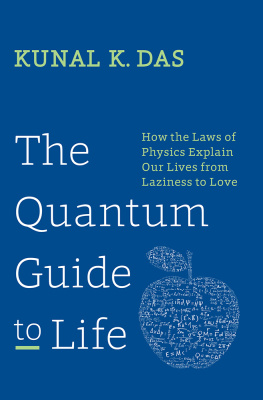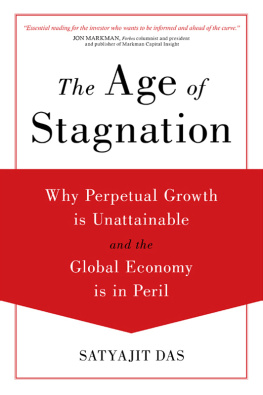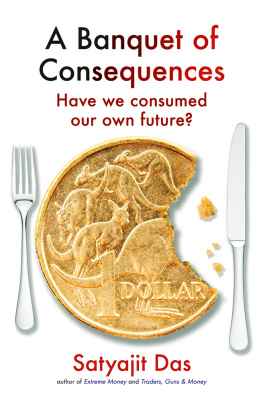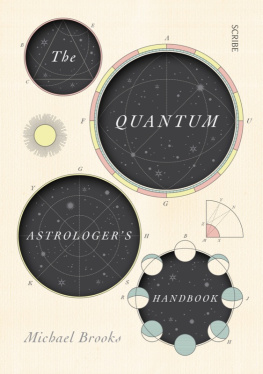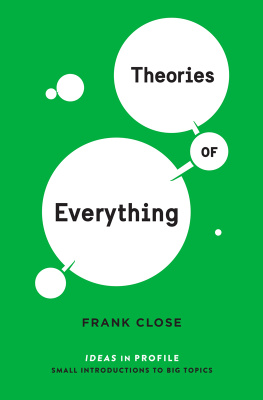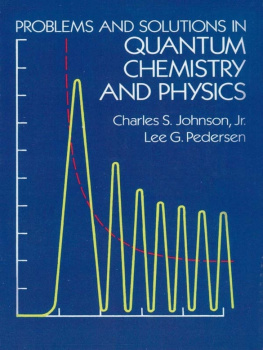THE QUANTUM
GUIDE TO LIFE
Copyright 2013 by Kunal K. Das
All Rights Reserved. No part of this book may be reproduced in any manner without the express written consent of the publisher, except in the case of brief excerpts in critical reviews or articles. All inquiries should be addressed to Skyhorse Publishing, 307 West 36th Street, 11th Floor, New York, NY 10018.
Skyhorse Publishing books may be purchased in bulk at special discounts for sales promotion, corporate gifts, fund-raising, or educational purposes. Special editions can also be created to specifications. For details, contact the Special Sales Department, Skyhorse Publishing, 307 West 36th Street, 11th Floor, New York, NY 10018 or info@skyhorsepublishing.com.
Skyhorse and Skyhorse Publishing are registered trademarks of Skyhorse Publishing, Inc., a Delaware corporation.
www.skyhorsepublishing.com
10 9 8 7 6 5 4 3 2 1
Library of Congress Cataloging-in-Publication Data available on file
ISBN 978-1-62087-624-4
EISBN 978-1-62636-380-9
Printed in the United States of America
CONTENTS
ACKNOWLEDGMENTS
Writing this book was mostly a solitary effort channeling ideas that I have formed over several years. I am responsible for all the ideas, the text, and the figures in this book. But after having written (and drawn) most of it for fun, when I thought of publishing it, I discovered that finding a publisher as an unknown, first-time author can be even more challenging than writing. That process was successful largely because I found the perfect literary agent for this book, Andy Ross, who shared my excitement about it. As the only person other than me who read all the chapters in detail before submission, his feedback was extremely valuable. My sincere thanks also go to my editor, Jennifer McCartney, at Skyhorse Publishing, for appreciating the value of a rather unconventional book. Her help and advice has been invaluable in transforming the manuscript into a published book. I am grateful to Rosario Torres, Sudarshan Fernando, and Eric Laub for helpful comments on some of the chapters. I owe much to my parents for raising me in an environment where I was always free to choose my own path and own beliefs in life and for encouraging diverse interests from early on.
INTRODUCTION
Ask your friends, What are your thoughts on life? How do you explain human behavior? Why are relationships so hard? or questions of that sort, and youre sure to get all kinds of answers, some obvious, some funny, some wild and whimsical, but I bet none of them would involve the laws of quantum physics. After all, what could quantum physics possibly tell us about our lives or the people around us? A great deal, actually, as this book will show. In quantum physics, we can find answers and justifications for almost every aspect of our lives, from the fundamentally profoundsuch as why life is so full of compromisesto the utterly mundanelike why it always takes effort to keep things tidy. As we seek out those hidden quantum connections and parallels, we will come up with often surprising and sometimes amusing insights into our life experiences. The universality of the themes considered here means that this book is truly intended for all literate practitioners of this thing we call life. Therefore, to make sure that no one is left out, I deliberately avoid math and dense logic with the firm belief that they are not necessary to communicate the essence of great ideas, even in quantum physics.
Two realms, which have always been considered antipodal and absolutely "un-relatable, come together in this book: the realm of everyday life (personal, social, relational, and financial) and the realm of the fundamental laws of physics. Therefore, you can read this either as a book about life that offers a completely different and novel perspective or as a brand new kind of popular science book where the abstract concepts of quantum physics are framed in terms to which we can all relate.
Although the book is intended for a broad audience, physicists will also find much of interest here. As far as I know, this is the only serious attempt ever at bridging what I call the Physicists Dilemma, which is that, while they themselves are absolutely convinced that they are dealing with the most important things in the universe, they can rarely make their work seem relevant or genuinely engaging, even to their friends and families. Fascination and curiosity are not enoughrelevance is crucial. The goal here is to make quantum physics relevant and relatable to everyone.
Each chapter can be read independently of all the other chapters. So, if you get a bit stuck on some idea in one chapter, feel free to move on to another one and come back to it. Every chapter explores the implications of one idea or set of closely related ideas important in quantum physics. But with physical laws being generally interconnected, there are bound to be occasional references to other chapters. However, in most cases, they are not absolutely essential to understanding the material at hand, and I will point out the few exceptions as and when they arise.
The ideas presented here draw intriguing parallels between the rules of life and the laws of quantum physics. This correspondence is relevant, because almost all our knowledge and wisdom is based on our drawing analogies and connections between what we learn and what we already know well. Often, the parallels are so eerily close as to make us wonder if our consciousness really sets us that much apart from the physical and inanimate universe, beyond the reach of its laws.
CHAPTER 1
A QUANTUM OF HAPPINESS
Quantization happens when a physical system is restricted by boundary conditions, to exist in only certain very specific states. Likewise, our mental states, as in how we feel, depend on the boundary conditions in our lives, meaning all the bonds and constraints that keep us where we are, with whom we are, and (doing what we do. The mechanisms that can alter quantum states suggest ways to reach happier states in life.
Money cannot buy you happinessan ancient bit of wisdom, often quoted, but seldom believed. You must have heard it often enough and perhaps even mutter it yourself occasionally. But if you do not feel wealthy, I bet you always had a lurking suspicion that this cant be rightsurely you would be a lot happier if you had more money! Rich folks do seem to be generally happier, and wealth certainly opens up a lot of attractive possibilities. So it is only natural to doubt and wonder, particularly in the ultra-materialistic world we live in today where we have become absolutely dependent on our possessions. We often tend to feel that the more we possess, the better we would feel, and the happier our lives would be. Shopping has indeed become a wistful antidote for feeling down and low.
Life does not come with a guarantee of happiness. But that has never prevented anyone from feeling entitled to it, and we stay in hard pursuit of it all our lives. Ironically, by trying so hard, we often make it even more elusive. In fact, we cant even agree upon what happiness really means. Ask around: You will simply get personalized descriptions of everything happiness is notlaundry lists of all those things missing in peoples lives that they think are keeping them from being happy. Each list would be a bit different, indicating a different definition of happiness for everyone.
So, with no universal definition or prescription on how to find it, our collective quest for happiness continues to be an essentially blind quest, and like any blind quest, the failure rate is quite high. Wouldnt it be nice to get an objective perspective on what happiness is all aboutto be able to establish a few concrete facts that could guide us in this universal quest for happiness? With some almost poetic parallels, the character of quantum states can help us do just that.

